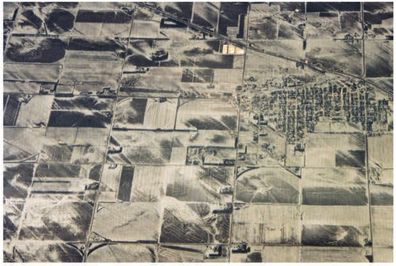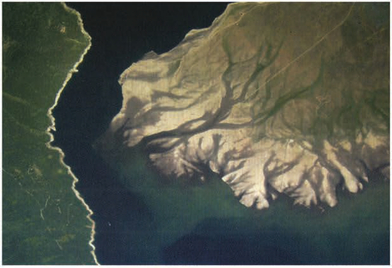41 Aerial: plane shots
Just say no to the in-flight movie
Alexis Gerard
The Idea
Taking a trip via commercial jet gives you an opportunity to create photographs that look like very few you've ever seen published. That's because almost all aerial photography is done from private planes and helicopters, which fly below the cloud cover-much lower than commercial airlines. In recent years we've also seen a lot of images of our earth shot from space, usually by satellites, but obviously, that point of view is from a much higher attitude than the one you'll have from your window seat.
Cloud Formation Viewed from a plane, cloudscapes take on a very different aspect from our familiar land-based perspective.
The Ingredients
- ▶ Any camera (ideally, with a wide-angle to telephoto zoom lens]
- ▶ Ticket for a commercial flight
The Process
I travel a fair amount (mostly for work) and, being a big fan of both aerial and space images, I always take the time to look carefully at the view from my window, a view that is very beautiful in its own way, Obtaining worthwhile images by shooting from that window seat, however, requires some knowledge and preparation. It does involve technical issues, but mostly it takes patience, persistence, and luck. You can have nothing but solid cloud cover under you for long stretches of time, then a break will reveal something spectacular, but only for a few minutes, and sometimes only for a few seconds. To maximize your chances of getting a good shot, pass on the movies and video games. Read or listen to music instead, that way you can send a quick glance out the window every few minutes. Look not only for the wide view, but also for features to zoom in on, and stay open to different types of beauty: cloudscapes, landscapes, natural features, or man-made structures; or images that are enjoyable primarily for their abstract quality. Here are some tips and tricks I've learned over the years.
There are three types of technical issue you'll have to deal with. They relate to:
- ○ the physical parameters of your location in the airplane;
- ○ your optimal camera settings; and
- ○ post-processing.
Plane issues
Beyond the obvious-get a window seat-it matters which window seat you get. Of course, you don't want your view obstructed by the wing, but you'll also find that jet engines can leave a trail of air turbulence that causes distortion, so you will want to be seated ahead of them. If you really get into this, you'll find that the combination of what direction you're traveling in, which side of the plane you're on, and what time of day it is can make a difference. For instance, you generally don't want the sun facing your camera, so if you're flying north in the morning, you'll want to be on the right-hand side of the plane. There's also the fact that the window you're looking out of wasn't designed for photography, and very often wasn't cleaned properly. I carry alcohol wipes to clean the window, but if it's very badly scratched, or made of a material that bands, it's game over. Finally, you will be instructed to turn off "all electronic devices" for takeoff and landing, which is just when you can get some of the most interesting views. Hmmm ... nono comment!
Camera issues
The objects you see from your plane window move much faster than they appear to. You'll have only a few seconds to get the framing you want. So, in the interest of speed, turn off your autofocus and set it to infinity. And since depth of field is not a consideration, but shutter speed is, go with Shutter Priority or, on point and-shoots, Sport mode. I recommend these settings over full manual, because lighting conditions can vary dramatically very quickly. One big advantage of digital cameras for this type of shooting is that they allow you to compose on an LCD rather than a viewfinder. If your face is glued to the camera, your range of motion will be very reduced, particularly as you're already confined to a small space and can't move around freely. Holding the camera away from your face and composing with the LCD, especially if it tilts and/or swivels, will enable you to direct your lens with much more freedom.
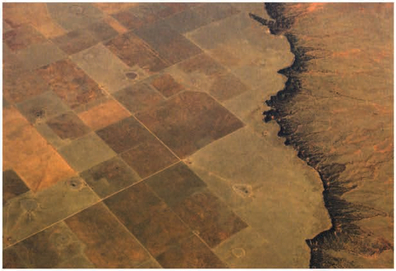
Mesa Edge A view that contrasts the orderly nature of man-made fields with fractal-like natural features reads as either landscape or abstract.
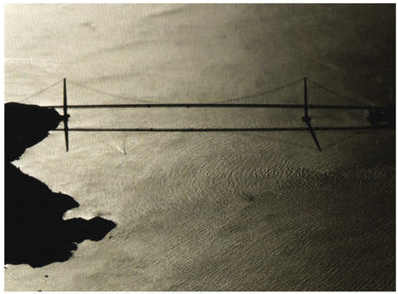
Golden Gale Bridge One of the world's most famous landmarks viewed from a different perspective
Post-processing issues
Be prepared for extremely low-contrast, bluish images that don't look like what you remember seeing. That's because your eye-brain system compensates to some degree for the poor optical qualities of your airplane window and for the atmospheric haze below it, but the camera doesn't. If you use automatic correction tools such as Auto Contrast or Auto Color to fix things, you're most likely going to get a pretty wild-looking result because the values in your file are quite different from those that these algorithms are designed to correct. Such images can be visually appealing, and you might find them to your liking. Personally, I prefer trying to recreate what I saw as closely as possible, which is a bit more work. If you want to go that route, you will give yourself the best odds if you start by shooting RAW, if your camera supports it. Your program's RAW processing tools should then give you the flexibility to obtain the result you want. If you're starting with a JPEG file, use your program's contrast, black level, and color-correction tools gradually and iteratively, rather than trying to get to the result you want in one step, With patience you should get to a fully rewarding image.
Happy flying and happy shooting!
![Ice Floes Flying over the [north] polar ice cap reveals a landscape unlike any other, with striking abstract qualities.](http://images-20200215.ebookreading.net/23/4/4/9781136089893/9781136089893__photo-op__9781136089893__Images__fig00376.jpg)
Ice Floes Flying over the [north] polar ice cap reveals a landscape unlike any other, with striking abstract qualities.
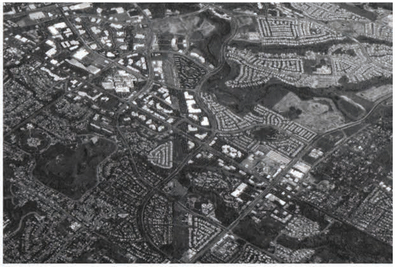
Suburbia Urban development viewed from above often brings to mind electronic circuits.

Winter Landscape Some of the most spectacular images are of landscapes partially covered by snow
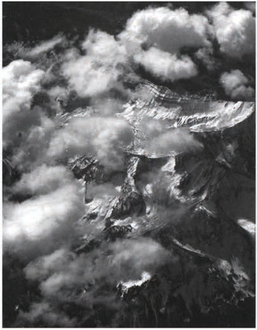
Peaks and Clouds Cloud- and landscape combined in a high-contrast image.
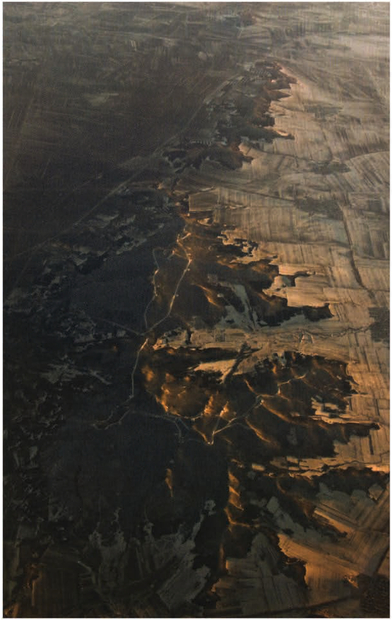
North China Dawn Dawn and evening light "rakes" the landscape at a low angle, producing some stunning effects.

